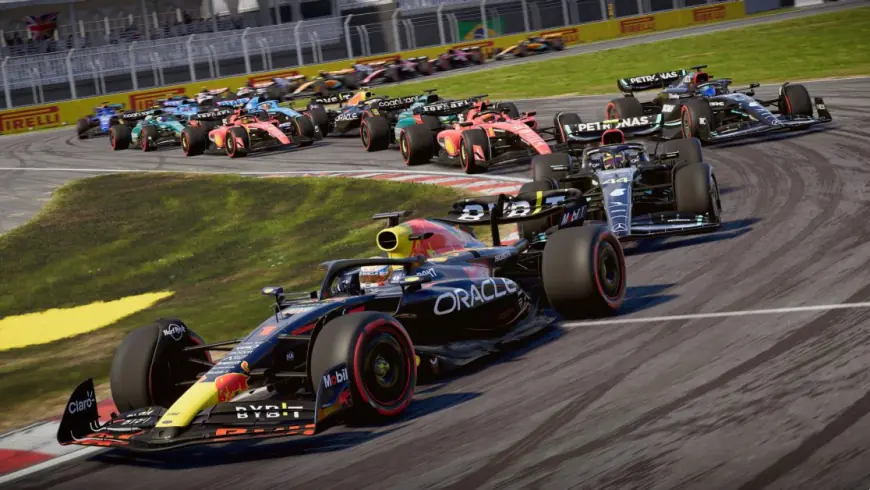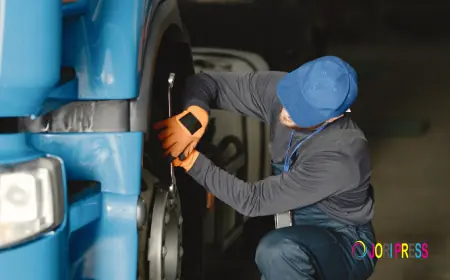Under the Halo: Breaking Down F1 Strategy

Formula 1 is often perceived as a sport defined by speed, horsepower, and dramatic overtakes. But beneath the roar of the engines and the glamour of the grid lies a world of strategy that often determines the outcome before a single wheel is turned. Welcome to the tactical heart of F1, where milliseconds matter, and chess is played at 200 miles per hour.
Behind every successful driver stands a team of engineers, analysts, and strategists calculating every possible scenario in real time. Winning in F1 isn’t just about being the fastest on the track—it’s about making the right decisions at the right time.
In this article, we go under the Halo, exploring the core elements of Formula 1 strategy and how teams navigate the chaos of race weekends, all while fans around the world follow the action through F1 Streams on platforms like Totalsportek.
The Role of the Halo and Safety in Modern Strategy
The title of this article is more than metaphorical. The Halo, the protective device placed over the cockpit of F1 cars, has become a symbol of the sport’s modern identity: technologically advanced, safety-first, and constantly evolving.
Strategically, the Halo changed how drivers see and interact with the track. Visibility, airflow, and even mental focus have been redefined. But more broadly, it represents the blend of tradition and technology that defines F1 today. In the same spirit, race strategy has adapted—growing more complex as data and simulations take center stage.
Pre-Race Planning: The Virtual Battle Begins Early
Strategy starts long before the lights go out. In the days leading up to a Grand Prix, teams run countless simulations based on weather forecasts, track temperature, tire degradation, and historical data. Every possible race scenario—from clean starts to first-lap collisions—is modeled in pursuit of the perfect plan.
During qualifying, teams decide whether to prioritize grid position or race pace. In certain races, starting on a harder tire compound may be a better choice than starting at the front. That’s why you’ll often see differing strategies even among teammates.
This type of preparation is what makes following the sport through F1 Streams on Totalsportek so exciting. Fans can track not just the on-track drama, but the execution (or unraveling) of carefully laid plans in real time.
Pit Stops: Where Races Are Won and Lost
A one-second delay in the pit lane can cost a driver multiple positions. That’s why pit strategy is one of the most crucial aspects of race planning.
Deciding when to pit is a dance between tire performance, track position, and competitor behavior. Pit too early, and a driver may lose pace toward the end of the race. Pit too late, and they risk being undercut by rivals who stop earlier and gain time on fresh rubber.
A well-executed undercut—where a driver pits early and uses fresh tires to leapfrog a competitor—can dramatically alter the race order. The overcut, though rarer, can work on tracks where staying out longer gives the driver clean air and better lap times.
As millions tune in to F1 Streams via Totalsportek, these pit stop decisions often become focal moments, sparking debate and excitement among fans around the world.
Tire Management: More Than Just Rubber
Each race weekend, teams must choose from three tire compounds—soft, medium, and hard—each offering a different tradeoff between speed and durability. Softer tires provide better grip but wear out quickly, while harder tires last longer but offer less performance.
The art of tire management lies in knowing how to push when needed and conserve when possible. Drivers must balance aggression with care, adjusting their driving style based on tire feedback. Meanwhile, teams constantly monitor tire temperatures, wear patterns, and telemetry to determine when to make a move.
Fans watching through F1 Streams often follow tire strategies closely, especially during long stints where subtle changes in pace or tire degradation can signal an impending pit stop or a shift in race tactics.
Weather, Safety Cars, and Curveballs
Even the best strategies can be upended by the unpredictable. Weather changes, accidents, or an unexpected safety car deployment can flip the entire field on its head.
A sudden rain shower might force teams to gamble on switching to intermediate or wet tires before their rivals. A safety car might prompt a "free pit stop" opportunity, reducing time lost in the pits and allowing teams to gain positions.
Being able to respond instantly to these curveballs separates the great strategists from the good ones. And for fans using F1 Streams on Totalsportek, these moments inject pure adrenaline into the experience, as the race can be turned upside down in a matter of seconds.
Team Orders and Multi-Car Strategy
In a team with two drivers, strategy becomes even more complex. Teams must balance individual performance with collective goals. Sometimes, this means issuing team orders—instructing one driver to let another pass, or holding position to secure points.
These decisions are never easy. They can protect a lead in the Constructors' Championship, avoid risky battles, or favor the driver with a better chance at the title. But they also carry emotional weight and public scrutiny, especially when seen live via F1 Streams.
Totalsportek’s coverage allows fans to watch both the race and accompanying commentary, providing insights into how these decisions unfold in real time, adding another layer to the strategic drama.
Fuel, ERS, and Engine Modes
Modern F1 cars are technological marvels. Managing fuel, energy recovery systems (ERS), and engine modes is another layer of strategy that can swing a race.
Drivers may be told to switch to a lower engine mode to save fuel, or to deploy extra battery power (ERS) during a crucial overtake attempt. These tools must be used wisely—deploy too early, and there’s nothing left for defense; wait too long, and the opportunity might pass.
Again, these decisions are made in split seconds, informed by a complex web of data. Watching through F1 Streams, particularly with real-time team radio and analytics, gives fans a front-row seat to these invisible but vital aspects of the sport.
The Totalsportek Experience: Connecting Fans to the Strategy
For many fans around the world, accessing official F1 broadcasts is either difficult or expensive. That’s where platforms like Totalsportek step in, offering F1 Streams that bring the sport to everyone, everywhere.
Whether you're in a café, traveling, or simply away from your TV, F1 Streams on Totalsportek ensure you never miss a crucial moment—be it a strategy-defining pit stop or a race-altering weather change. The platform has become a hub for global fans who want real-time access to the strategy, pace, and precision of Formula 1.
Conclusion: The Race Within the Race
While speed will always capture the spotlight, Formula 1 is ultimately a strategic masterpiece. It is a team sport disguised as an individual one. The drivers may take the podium, but victories are built on the backs of hundreds of decisions—calculated, timed, and sometimes improvised.
As technology continues to evolve and fan access expands through F1 Streams on Totalsportek, the strategic side of the sport becomes more visible and appreciated. Watching a Grand Prix isn’t just about who’s fastest—it’s about who’s smartest, who adapts best, and who plays the game beneath the game.
In Formula 1, strategy is everything. And once you start watching races through that lens, especially with the accessibility of F1 Streams, you’ll realize that every lap is a battle of brains as much as it is of bravery.
What's Your Reaction?
 Like
0
Like
0
 Dislike
0
Dislike
0
 Love
0
Love
0
 Funny
0
Funny
0
 Angry
0
Angry
0
 Sad
0
Sad
0
 Wow
0
Wow
0















































